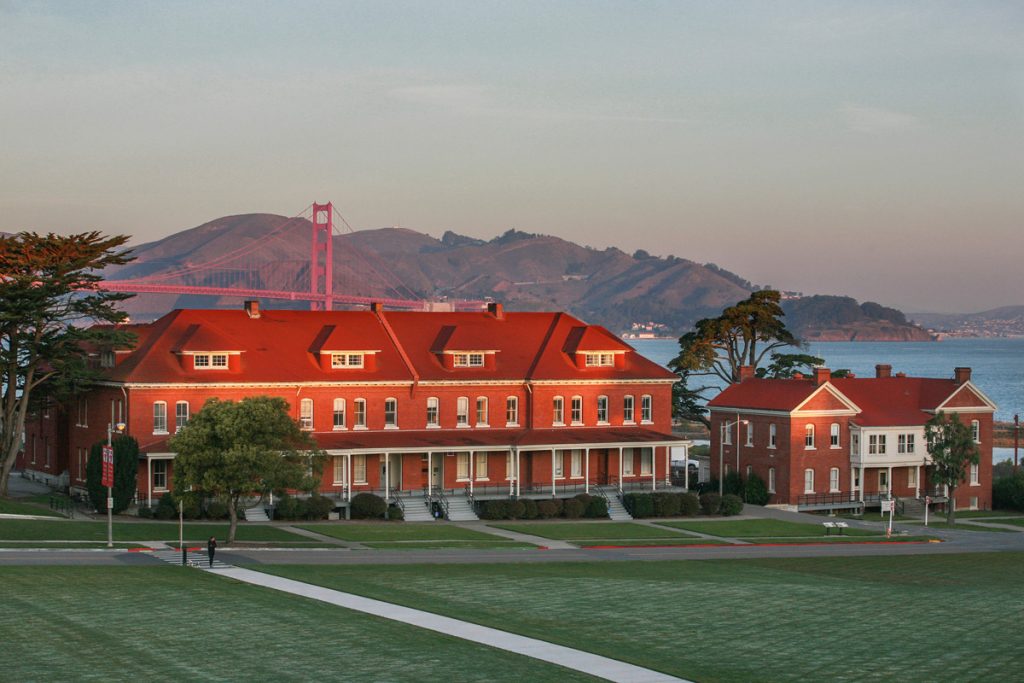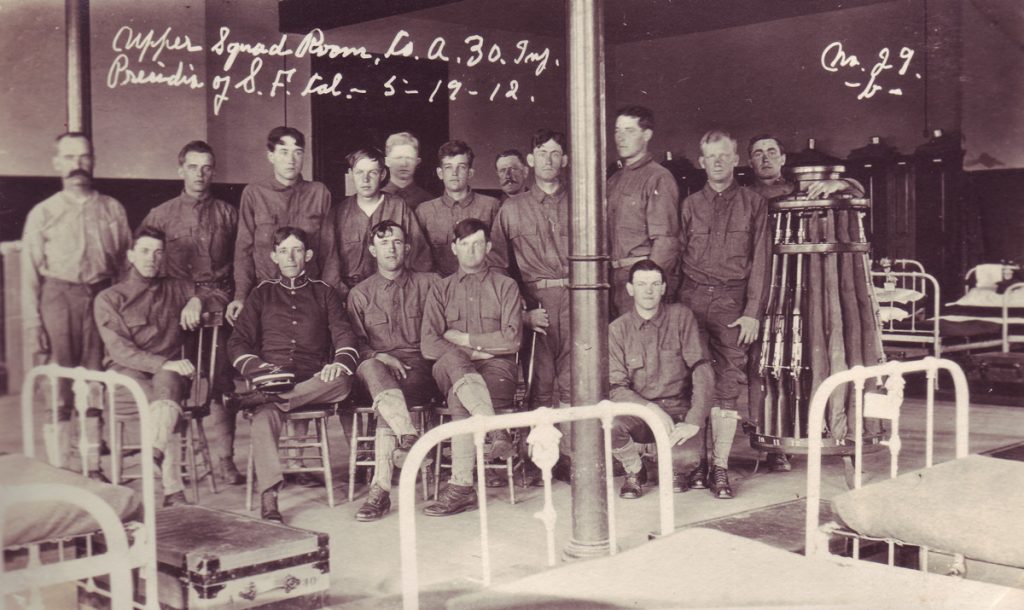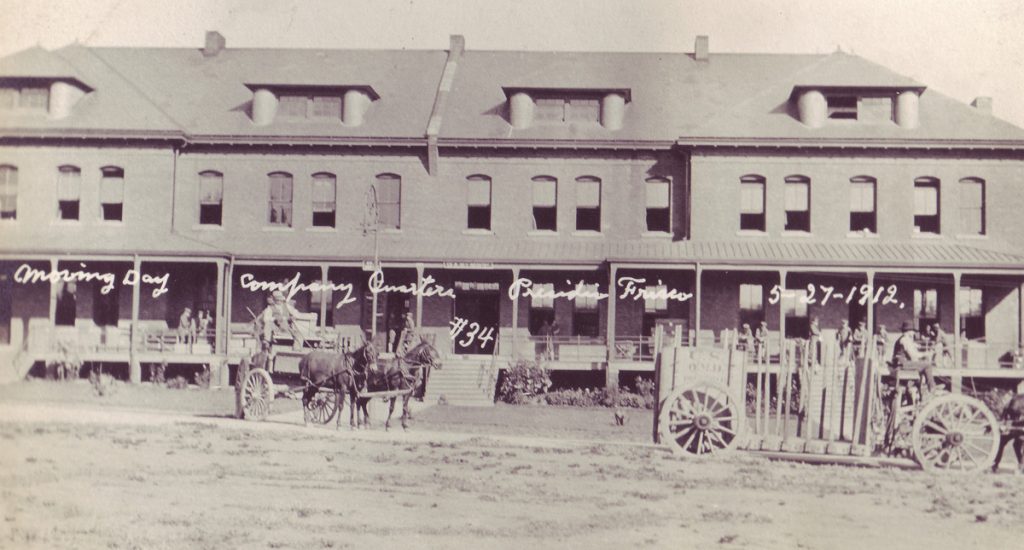LANDMARKS | BRIDGET MALEY
Just before the Fourth of July, the lucky first guests checked in to the Lodge at the Presidio, a new addition to the collection of overnight accommodations available in San Francisco’s Presidio. The stunning renovation of a former army barracks provides a unique urban park experience with world class views of the Golden Gate Bridge.
Rich in history and military tradition, the project blends a careful restoration of the exterior with clean, modern interiors incorporating some historic features. The artwork, historic photographs, found objects and even an army-issue blanket on each bed create a military theme that is not overbearing and even adds a bit of whimsy. The 42-room lodge has been nearly fully occupied since it opened.
The renovation was designed by Architectural Resources Group, with Laura Cook Interiors and Joyce Coyle Art Interiors, for the Presidio Trust. The lodge is overseen by Waterford Hotels and Inns.
Facing the Presidio’s main parade ground, the new lodge, formerly known as Building 105, is the northernmost in a series of five identical buildings known as the Montgomery Street Barracks. This distinguished group was constructed between 1893 and 1897 using a standardized military plan: “enlisted men’s barracks with mess.” The ensemble of two company barracks defined the western edge of the main post’s primary open space. Due to their brick construction and formal design, these buildings established a feeling of enduring permanence and military grandeur. Rising two full stories, with an attic and raised basement, the U-shaped plan buildings were built as “double” barracks, with mirrored interior plans, and are distinguished by their symmetrical composition and unifying materials.
Prior to the Civil War, the military constructed few permanent barracks. After the war, as new military installations were built, more attention was given to the design and construction of large barracks located on the edge of parade grounds. The Army began constructing two-company barracks featuring a central block flanked by two wings, with adaptations in the architecture for local traditions and styles.
In The Defender at the Gate, historian Erwin Thompson noted the conditions before the building campaign:
Before work could begin a ravine running north from the base of Presidio Hill, between the row of wooden barracks and the former laundresses row, had to be filled and the laundresses row removed. Once filled in, this new land would serve as company areas for the new row of barracks and eventually a parade ground.
This collection of brick barracks included a foundation made of stones quarried at Angel Island, stone windowsills and slate and tin roofing. Inside, both buildings were divided into equal halves separated by central stairways that each served one of the two companies that inhabited the structures. The barracks provided open dormitories, lavatories, kitchens, mess halls, company offices — and, for the convenience of the soldiers, dedicated spaces for a tailor and a barber. Interior finishes included lath and plaster walls and wood flooring, with cast iron columns that created large open rooms. The original capacity was for 80 soldiers on each side of the twin barracks.
Given the harmony of the Montgomery Street Barracks, architectural historian David Gebhard considered this row “one of the city’s finest street facades.” Indeed, this grouping is often photographed and is on par with Alamo Square’s Painted Ladies as one of the an iconic view of San Francisco. Innumerable historic images exist with these buildings as the backdrop for military reviews and parades, drills, funerals, visits of dignitaries and a range of military exercises throughout the 20th century.
The Montgomery Street Barracks tell the story of the evolution of military housing in the Presidio, as Army life changed from the Spanish American War in 1898 through the Vietnam War in the 1960s. The barracks served as a backdrop for many of the Presidio’s most important events.
With the completion of the Lodge at the Presidio, this military landmark has found a new use and a new way to tell the story of the Presidio.
LIFE AS A SOLDIER IN THE PRESIDIO, 1912-14
A soldier with a passion for photography, Clarence Tucker Beckett documented daily life in and around the Presidio during his tenure as an infantryman from 1912 to 1914. The Montgomery Street Barracks frequently appear in his varied scenes of work, leisure and everyday activities.
Beckett’s images capture the spirit of life as a soldier, as opposed to more common formal portraits of complete regiments. Beckett’s remarkable collection, now held by the Presidio Trust Library, offers a glimpse of the interior spaces and living conditions of the soldiers within these brick barracks.
Beckett’s photographs have been integrated into the design of the new Lodge at the Presidio.
Filed under: Bridget Maley, Landmarks








